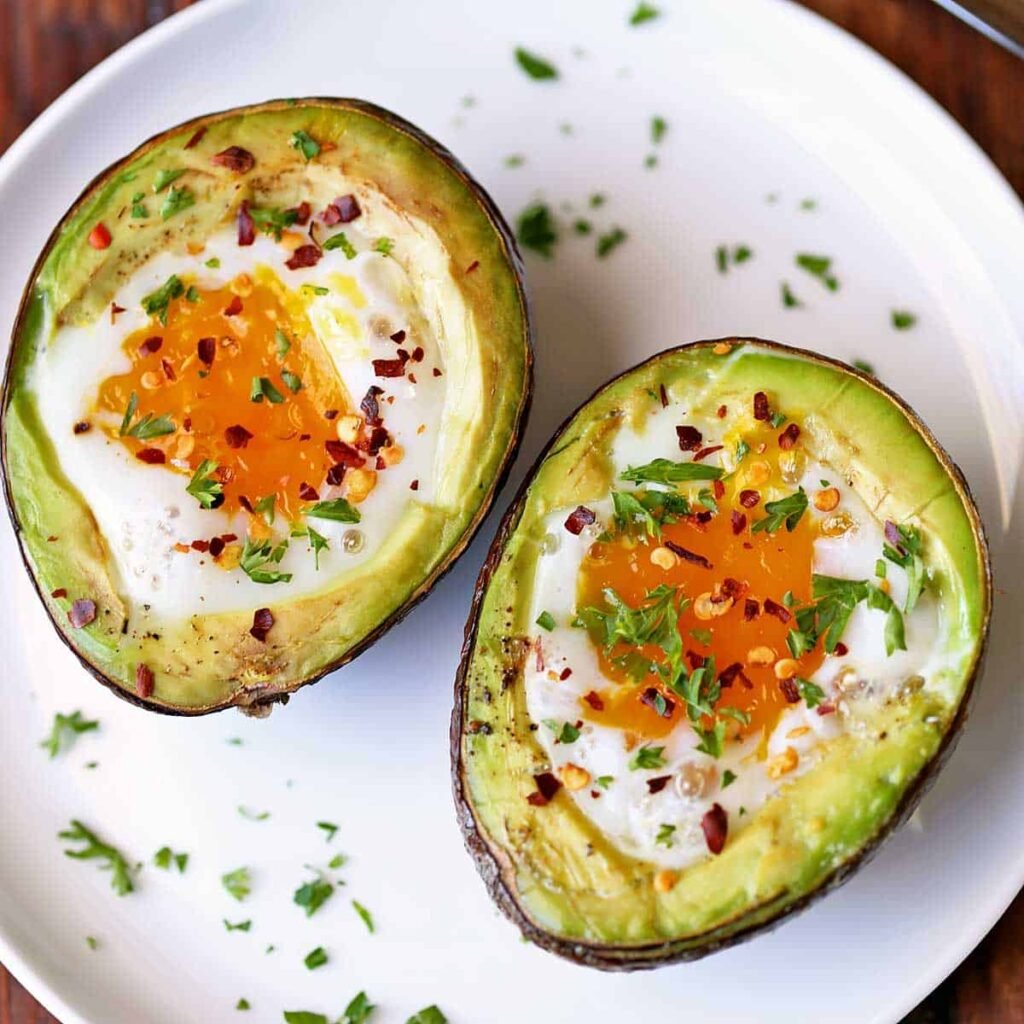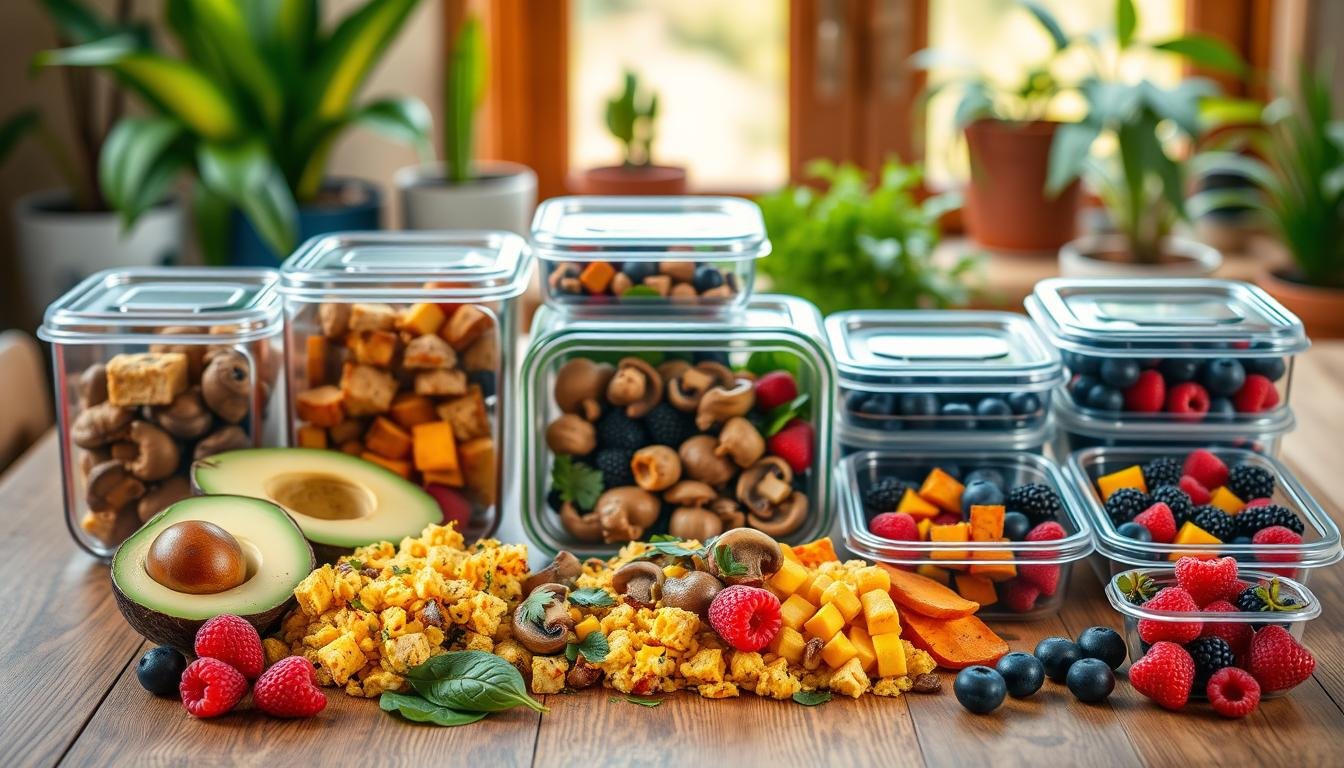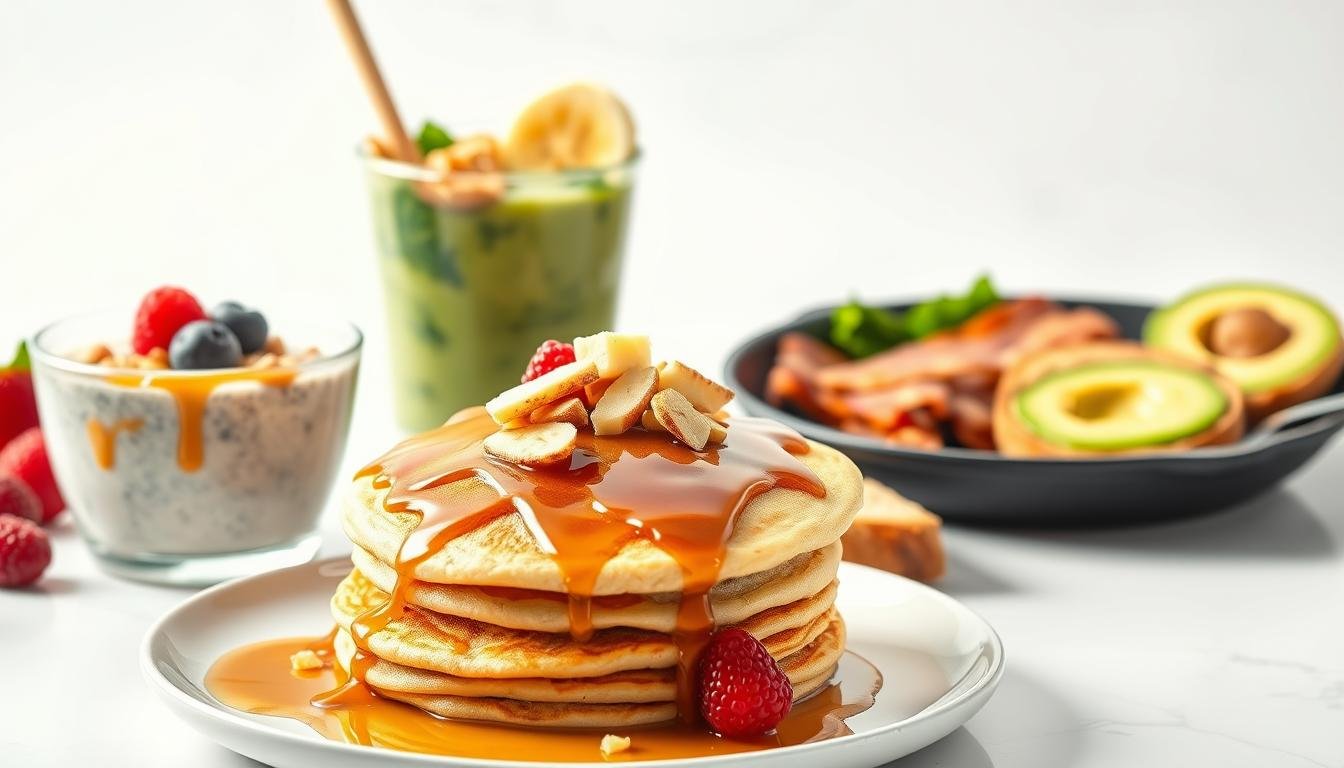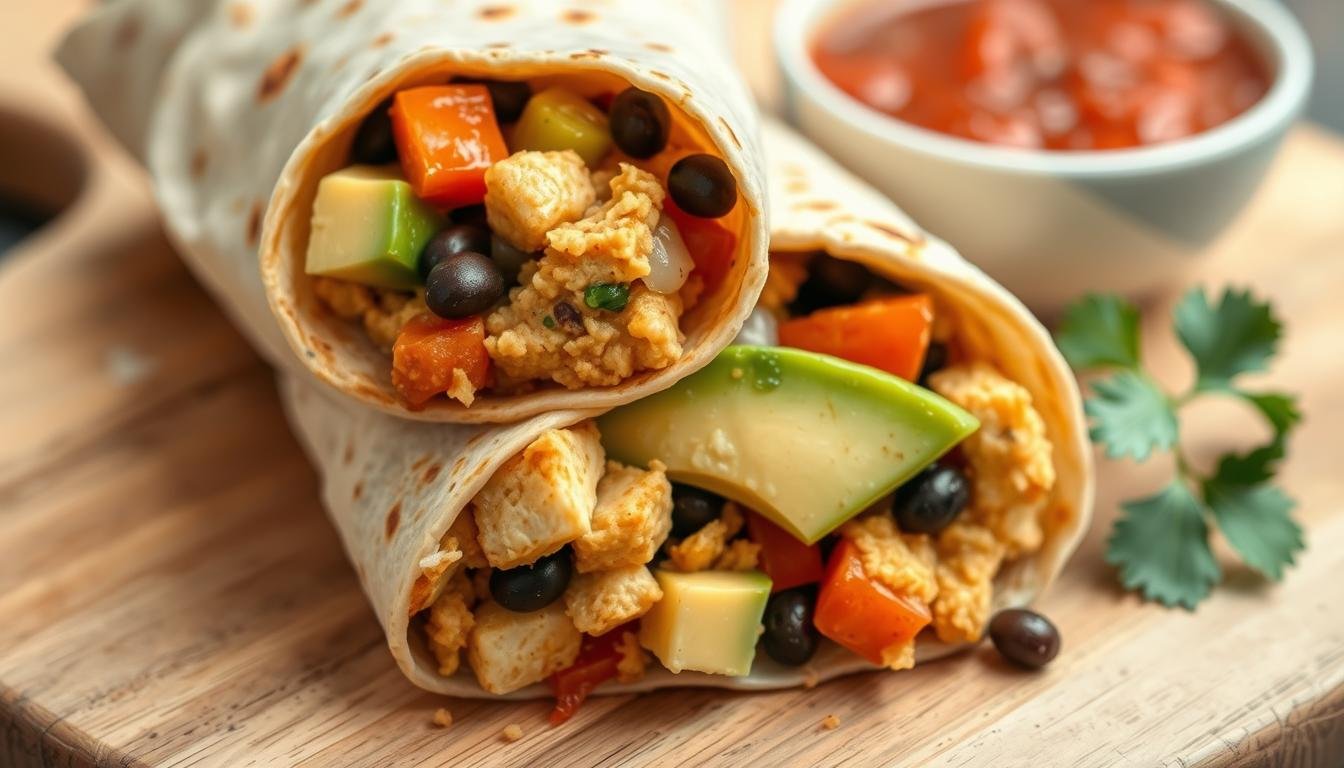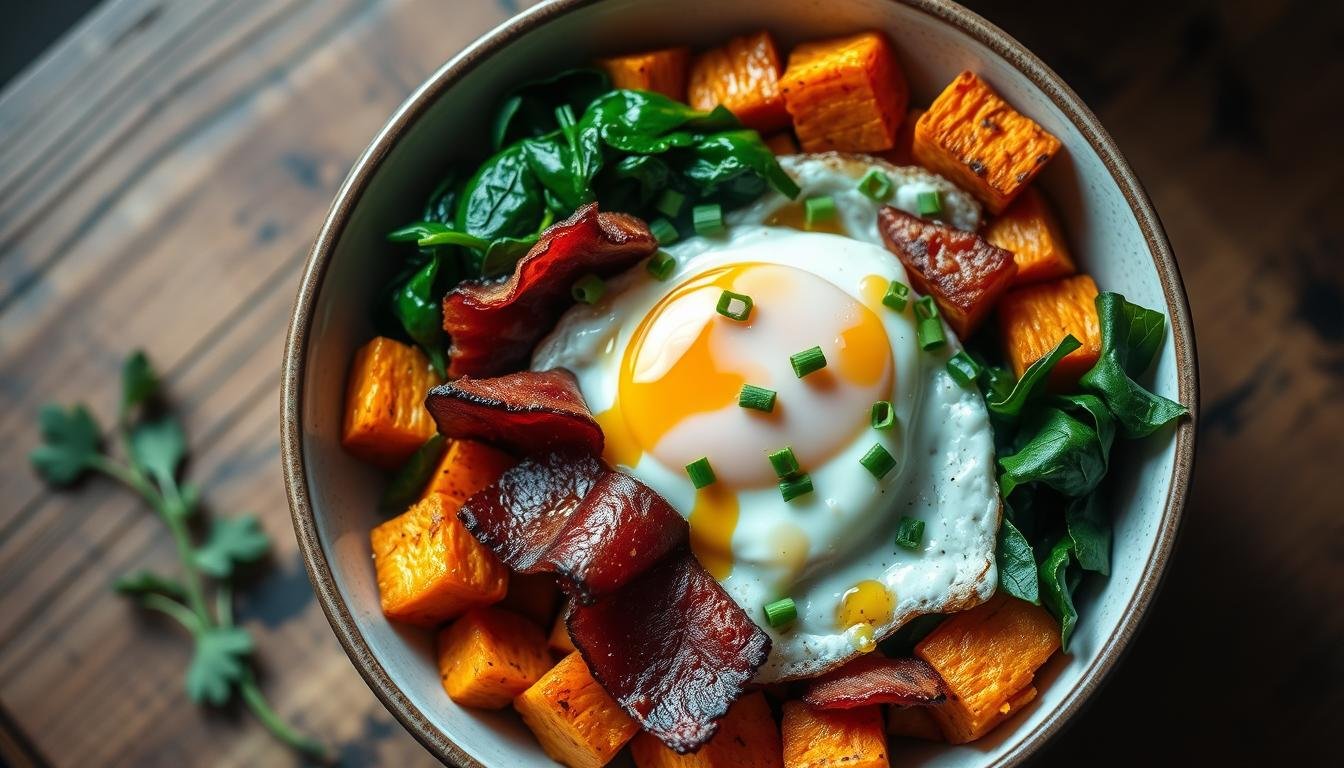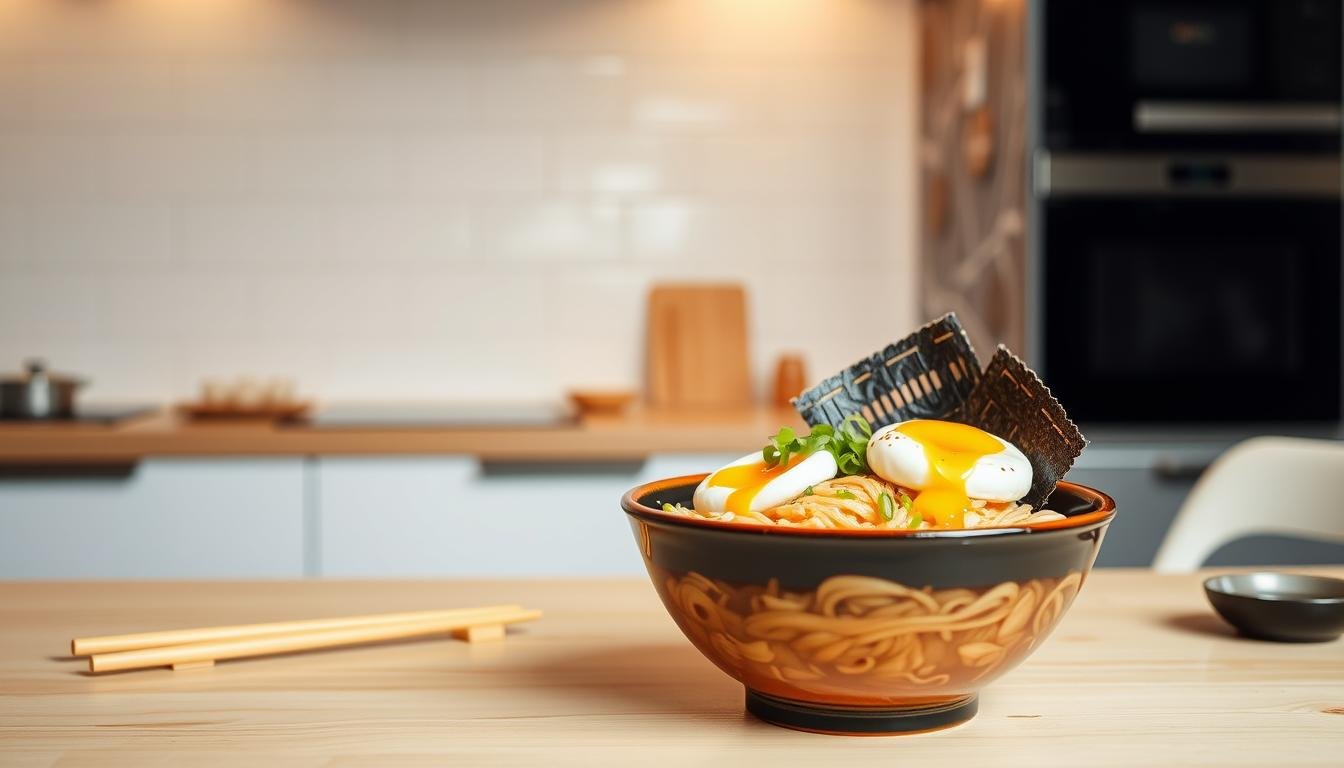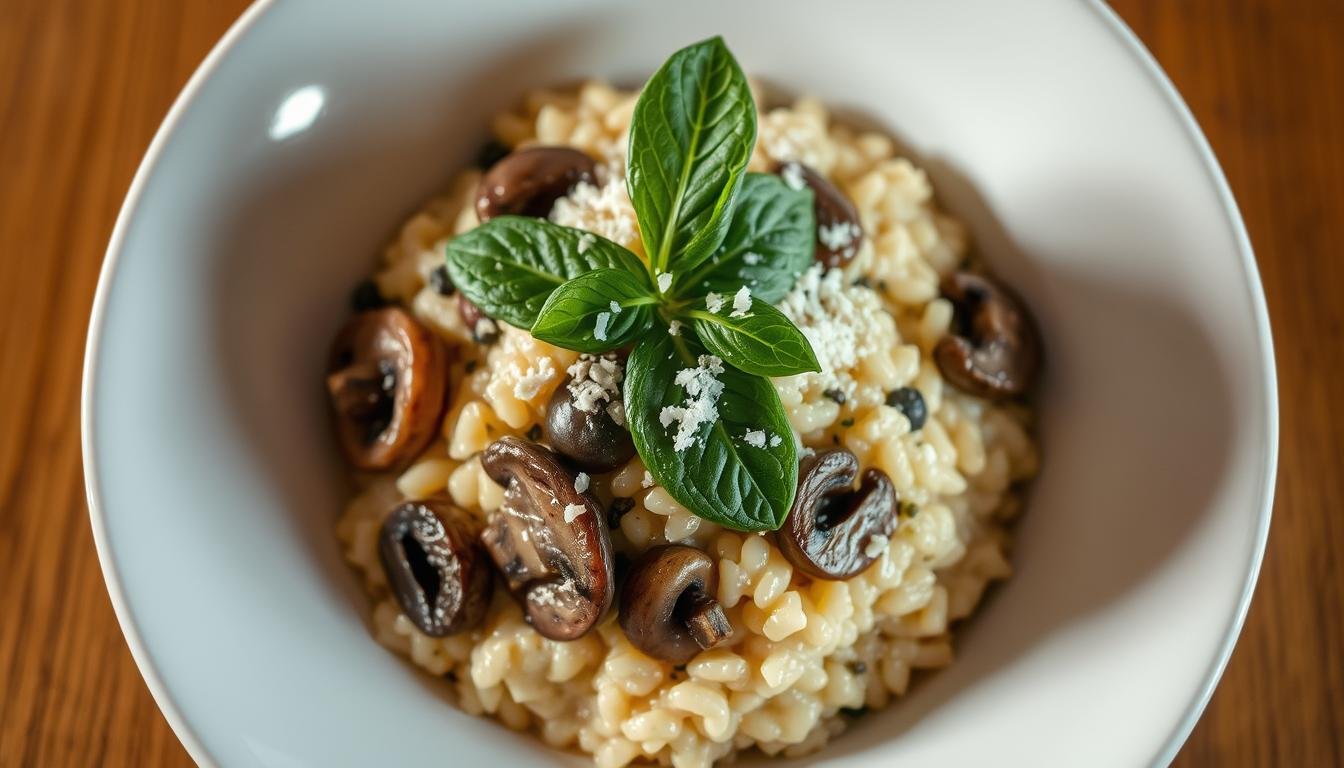Start your morning with meals that help you feel full and fuel steady progress toward your goals. This guide focuses on healthy & delicious low-fat breakfast ideas for weight loss that keep energy steady without excess calories.
Choose produce-forward plates and whole grains—oatmeal with fruit, avocado toast on whole grain bread, veggie scrambles, and protein pancakes all deliver staying power. Many recipes use simple swaps, like Greek yogurt hollandaise on a smoked salmon benedict, or tofu scramble in place of heavier options.
Practical prep matters. Make-ahead options such as overnight oats, freezer-friendly burritos, hard-boiled eggs, and slow-cooker oats make it easy to eat well on busy days. Smoothies built from liquid, fruit, veggies, and protein offer a quick, portable choice.
Enjoyment counts. Pick meals you like so healthy habits stick. Whether you eat early or later, these recipes help you start day strong and support sustainable weight management.
Key Notes;
- Nutrient density beats empty calories: choose foods that fill you up without excess energy.
- Combine fiber and protein to improve fullness and support weight control.
- Make-ahead meals simplify busy mornings and boost consistency.
- Simple swaps (Greek yogurt, whole grains, plant proteins) reduce calories without losing flavor.
- Coffee or green tea can pair well with whole-food morning meals.
Start your day strong: how low-fat, nutrient-dense breakfasts support weight loss
A nutrient-forward morning plate can curb appetite and help you control overall calories. Choose meals that combine volume with key nutrients so your morning sets a steady tone for the day.
Why caloric density, fiber, and protein matter in the morning
Caloric density means how many calories are in a given portion. Foods like vegetables, fruit, and whole grains offer high volume with fewer calories. They let you eat a satisfying plate while managing total intake.
Fiber from oats, chia, flax, and berries slows digestion and steadies blood sugar. Beta-glucan in oats supports fullness and cuts mid-morning cravings.
Protein at the first meal lowers appetite. Eggs and Greek yogurt are practical anchors backed by research showing reduced hunger after high-protein mornings.
Balancing satisfaction and sustainability for long-term success
Smoothies can work if built around leafy greens, low-sugar fruit, and a measured protein boost. Avoid calorie-dense add-ins like excess nut butters or sugary syrups.
“Choosing foods that fill the plate and the stomach helps people stay consistent with healthy habits.”
- Plan: batch-cook oats, hard-boil eggs, or portion yogurt to cut morning friction.
- Swap: trade sugary pastries for whole foods with fiber and protein to avoid energy crashes.
- Choose beverages: black coffee or green tea may aid metabolism if you limit added sugars and creamers.
| Component | Role | Practical examples |
|---|---|---|
| Caloric density | High volume, lower calories to feel full | Vegetable omelet, fruit plus oats |
| Fiber | Slows digestion, stabilizes blood sugar | Oats, chia, berries, whole-grain toast |
| Protein | Reduces appetite, boosts satiety | Eggs, Greek yogurt, protein powder |
| Beverages | Support without extra calories | Black coffee, green tea (limited sweeteners) |
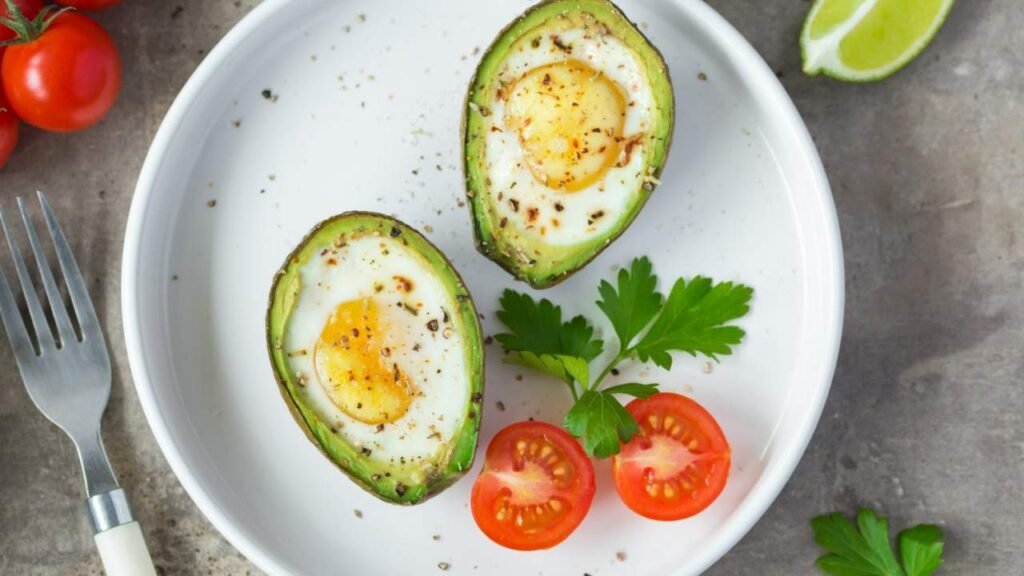
Low-fat breakfast ideas for weight loss
Start mornings with simple, nutrient-packed plates that stay satisfying without piling on calories. These practical recipes use whole ingredients and easy swaps to keep taste high and energy steady.
Veggie or tofu scramble with spinach and peppers
Saute mushrooms, peppers, and onions in a light spray of olive oil. Add beaten egg or crumbled tofu and fold in chopped spinach. Season with herbs, salsa, or hot sauce.
Make-ahead whole grain breakfast burrito
Fill a whole grain wrap with scrambled egg or tofu, roasted veggies, a little turkey sausage, and a light sprinkle of cheese. Wrap, freeze, and reheat for quick mornings.
Avocado toast and savory bowls
Mash avocado on a slice of whole grain bread. Top with tomato or arugula and red pepper flakes. Pair with a poached egg or smoked salmon to boost protein.
Oat bowls, pancakes, smoothies, and grab-and-go eggs
- Oatmeal: overnight or slow-cooker oats topped with berries, banana, and chia seeds.
- Protein pancakes: use a protein mix or batter; top with fresh fruit instead of syrup.
- Smoothie: almond milk, spinach, berries, banana, and a measured scoop of protein powder.
- Hard-boiled eggs: batch cook and pair with cut fruit or raw veggies for a fast plate.
| Recipe | Key ingredients | Prep tip |
|---|---|---|
| Veggie scramble | Egg or tofu, peppers, spinach, salsa | Cook veggies first; fold in protein last |
| Freezer burrito | Whole grain wrap, eggs/tofu, mixed veggies, light cheese | Wrap tightly; freeze up to 1 week |
| Oat bowl | Oats, berries, banana, chia | Make overnight for grab-and-go mornings |
| Smoked salmon plate | Smoked salmon, poached egg, Greek yogurt hollandaise | Skip the muffin or use rye for fewer simple carbs |
Rotate these options during the weekto keep meals interesting and aligned with your weight goals.
Eggs and veggies: high-protein, low-calorie-density plates
Egg-forward plates paired with colorful vegetables make mornings satisfying while keeping calories in check. Eggs supply concentrated protein and micronutrients such as selenium and riboflavin. That protein helps curb appetite and can reduce mid-morning snacking.
Scrambled eggs with sautéed mushrooms, onions, and tomatoes
Heat a nonstick pan and quickly sauté mushrooms and onions. Add chopped tomatoes just before the eggs to keep them bright. Whisk and fold in to make fluffy scrambled eggs without extra fat.
Spinach-studded omelet cooked with a drizzle of olive oil
Wilt a handful of spinach in a teaspoon of olive oil. Pour in beaten egg and cook gently until set. The greens add fiber and volume so one plate leaves you full on fewer calories.
Smoked salmon benedict on an English muffin alternative
Poach an egg and top smoked salmon with a Greek yogurt hollandaise. Skip a traditional english muffin—use a thin whole-grain base or a bed of greens to cut refined carbs.
“Higher-protein mornings with veggies can improve satiety and support steady progress toward weight goals.”
- Load plates with vegetables to boost fiber and volume.
- Add pico de gallo or hot sauce for bright flavor with almost no calories.
- Prep chopped veggies ahead to save time and rotate options through the week.
Oats and whole grains: fiber-first bowls that keep you full
Warm grain bowls combine beta-glucan-rich oats with fruits or savory toppings to support steady appetite control. Oats are low in calories yet high in fiber and protein, so a modest bowl can fill you up and steady blood sugar.
Classic vs. overnight vs. slow-cooker bowls
Classic stovetop oatmeal cooks fast and gives a creamy texture. Overnight oats chill in the fridge and save time. Slow-cooker oatmeal simmers overnight and arrives hot with minimal effort.
Steel-cut template with seeds and fruit
Try 1 cup steel-cut oats to 3 cups water or milk. Stir in 1 Tbsp flax and 1 tsp chia, then top with seasonal fruit. These small additions raise fiber and add healthy fats to boost fullness.
Savory oatmeal: egg, scallions, and veggies
Make savory oatmeal by folding in sautéed mushrooms, spinach, and scallions. Top with a soft-cooked egg for extra protein and texture. This variation keeps calories controlled while feeling hearty.
“Beta-glucan in oats supports satiety and steady energy between meals.”
| Method | Texture | Best use |
|---|---|---|
| Stovetop | Creamy, quick | Everyday mornings |
| Overnight | Thicker, chilled | Grab-and-go |
| Slow-cooker | Very soft, warm | Hands-off prep |
Greek yogurt and smoothie options for quick protein
Choose a high-protein yogurt base to build a fast, satisfying morning meal that travels well. A simple parfait or a green shake gives protein, fiber, and bright fruit with minimal prep. These options support steady energy and help manage appetite through the morning.
Greek yogurt parfait with whole grain granola and berries
Formula: layer one cup of greek yogurt, a modest scoop of whole-grain granola, and a generous handful of fresh berries. This combo pairs concentrated protein with fiber and antioxidants.
Why it works: the higher-protein yogurt base supports satiety and steadier energy compared with sugary alternatives. Pre-portion yogurt cups and granola into jars to speed assembly on busy days.
Simple green smoothie: almond milk, spinach, banana, protein powder
Blend 1 cup almond milk (or dairy milk), a handful of spinach, half a banana, and one scoop of protein powder until smooth. Use frozen fruit to thicken the drink and keep it chilled.
Keep high-calorie add-ins in check. Skip extra nut butters and syrups. Add cinnamon, fresh mint, or a squeeze of lemon for flavor without sugar.
- Use one cup of greek yogurt or a single scoop of powder for consistent protein.
- Portion smoothie packs in freezer bags to save time.
- Rotate fruits—berries, kiwi, or small mango portions—to vary taste and nutrients.
| Option | Key ingredients | Serving tip |
|---|---|---|
| Parfait | Greek yogurt, granola, berries | Jar layers; eat within 24 hours for best texture |
| Green smoothie | Almond milk, spinach, banana, protein powder | Measure liquids to control calories and texture |
| Grab-and-go | Pre-portioned yogurt cups, sliced fruit | Store in fridge for quick assembly |
Smart fruit, nuts, and seeds to boost nutrients without excess calories
Smart fruit and seed pairings give you fiber and micronutrients without extra calories. These small additions lift nutrient density and make morning plates more satisfying.
Berries, kiwis, and grapefruit add fiber and vitamins
Berries are rich in fiber and antioxidants; a cup is a low-calorie way to add volume and nutrients. Kiwis supply vitamin C, K, potassium, and fiber, and may help with fullness and body composition when eaten regularly.
Grapefruit offers high water content and fiber but can interact with some medications. Check with a pharmacist or physician before eating it daily.
Chia seeds and flaxseeds for fullness and steady energy
Chia seeds absorb liquid to form a gel that extends satiety between meals. Flaxseeds deliver viscous, soluble fiber that slows digestion and can help curb appetite.
Use measured sprinkles on oatmeal, yogurt parfaits, or smoothie bowls to boost nutrients without calorie creep. Pair fruit with protein—Greek yogurt or eggs—to make a balanced, hunger-taming plate.
| Add-on | Benefit | Portion tip |
|---|---|---|
| Berries (mixed) | Fiber, antioxidants, low calories | 1 cup fresh on oats or yogurt |
| Kiwi | Vitamin C, potassium, fiber | 1 medium, sliced with parfaits |
| Grapefruit | High water and fiber; fullness | Half fruit; check meds before regular use |
| Chia seeds | Forms gel, prolongs satiety | 1 Tbsp soaked in 3 Tbsp water |
| Flaxseeds | Soluble, viscous fiber | 1 tsp ground; add to bowls or smoothies |
Make-ahead and grab-and-go breakfasts for busy mornings
A short weekend session can produce several quick, healthy options you’ll reach for all week.
Plan the prep by grouping similar tasks: cook, cool, and portion. That saves time and reduces waste.
Freezer-friendly burritos, pancakes, and waffles
Make burritos with scrambled egg, roasted vegetables, and a light sprinkle of cheese. Wrap tightly and freeze up to one week. Reheat in the microwave (60–90 seconds) or oven to keep texture.
Double pancake or waffle batter and freeze single layers on a sheet. Toast or microwave from frozen for a hot morning meal in minutes.
Batch-cooked hard-boiled eggs and portioned yogurt cups
Cook a batch of hard-boiled eggs and peel easily by adding a teaspoon of baking soda to the water or using slightly older eggs. Portion yogurt cups with fruit and a measured scoop of whole grain granola.
“Label containers with dates and ingredients to rotate meals and reduce guesswork.”
- Assemble smoothie packs—fruit, greens, and seeds—so mornings need only a liquid and a blend.
- Keep a small inventory of ready-to-eat items so choices stay healthy when time runs short.
- Balance every make-ahead plate with protein and fiber to carry you through the first half of the day.
| Make-ahead item | Prep tip | Storage |
|---|---|---|
| Freezer burritos | Cool fully; wrap in foil then bag | Freeze up to 1 week; reheat microwave or oven |
| Pancakes/waffles | Flash-freeze single layers | Store in freezer bags; toast from frozen |
| Hard-boiled eggs | Add baking soda or use older eggs to peel | Keep in fridge 5–7 days; label date |
| Yogurt cups | Portion fruit and granola separately | Refrigerate; eat within 3 days |
Toast, grains, and better beverage choices
Pick a sturdy slice of whole grain bread and layer hummus, greens, and a squeeze of lemon to start the day with fiber and flavor.
Simple swaps—better bread and bright toppings—add volume without many extra calories.
Whole grain bread or English muffin with hummus or avocado
Build toast on whole grain bread or a lighter english muffin and top with hummus or mashed avocado. Add tomato, arugula, or sprouts for texture and extra fiber.
Keep portions matched to your hunger and schedule. Cucumber, radish, herbs, lemon zest, or a pinch of chili deliver flavor with almost no added calories.
Coffee and green tea: benefits and what to skip in your cup
Black coffee and unsweetened green tea pair well with morning plates. Caffeine may aid fat loss and green tea links to less belly fat in some studies.
Avoid heavy creamers and sugary syrups that quickly inflate calories. If you want creaminess, add a splash of milk or a calorie-conscious substitute and measure it.
“Small beverage choices can add up — measure, taste, and skip the extras.”
- Use whole grain or grain bread as the base to boost satiety.
- Top with vegetables and herbs to add volume without many calories.
- Drink a cup of black coffee or unsweetened green tea and a glass of water to stay hydrated through the day.
- Quick checklist: limit syrups, measure milk, taste before adding more.
| Choice | Benefit | Practical tip |
|---|---|---|
| Whole grain toast | More fiber, lasting fullness | Top with hummus, tomato, and arugula |
| English muffin (light) | Lower refined carbs than standard options | Use thin or whole-grain versions; toast crisp |
| Black coffee / green tea | May support fat loss and alertness | Avoid sugar; measure any milk to control calories |
Conclusion
Build morning plates that pair protein and fiber to curb hunger and steady energy all day.
Focus on practical patterns: eggs or Greek yogurt, oats with fruit, measured smoothies with protein powder, and veggie-forward plates. These combos stabilize appetite and help control calories while supporting long-term goals.
Use small prep wins—hard-boiled eggs, overnight oats, pre-portioned yogurt cups, and a batch of freezer-friendly burritos—to save time and keep mornings consistent.
Keep add-ins measured: a tablespoon of chia or flax, a scoop of protein powder, or a single slice of whole-grain toast. Drink water first, and enjoy black coffee or green tea with minimal sweetener.
Pick two healthy breakfast ideas to prep this week and start your day with confidence, flavor, and momentum toward sustainable progress.

